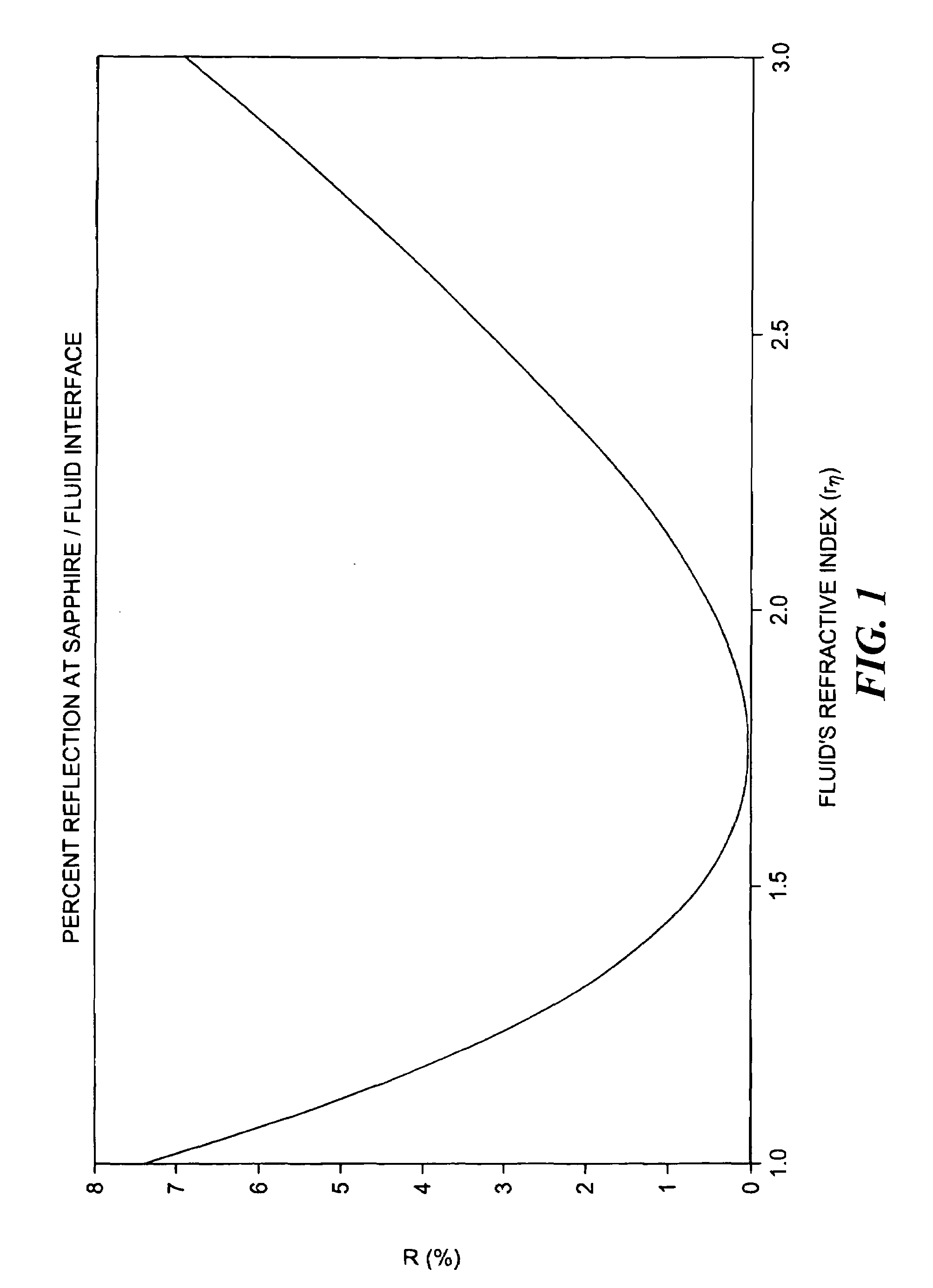Method and apparatus for a downhole refractometer and attenuated reflectance spectrometer
a refractometer and reflectance spectrometer technology, applied in the field of refractometry and spectrometry, can solve the problems of wasting several years building very expensive platforms with proper oil and gas handling facilities, fluids that are withdrawn may be highly contaminated, and the downhole environment is a difficult one in which to operate a sensor, so as to eliminate the temporary increase in brightness
- Summary
- Abstract
- Description
- Claims
- Application Information
AI Technical Summary
Benefits of technology
Problems solved by technology
Method used
Image
Examples
Embodiment Construction
[0036]The present invention provides a method and apparatus for determining a number of formation fluid properties from a refractometer measurement. The present invention also provides a method and apparatus to more accurately distinguish between gas and liquid based on the much lower index of refraction of gas. The refractive index of a wellbore or formation fluid can be determined from the fraction of light, R, reflected off of the interface between the preferred transparent window, having a known refractive index and the formation fluid under analysis.
[0037]FIG. 1 shows the percentage of light reflected from the fluid / sapphire interface, when that light is incident perpendicular to the plane of the surface of the transparent window and interface. In this figure, the window has a fixed index of refraction of 1.75 but the index of refraction of the fluid varies. The minimum reflection occurs when the fluid's refractive index equals the window's refractive index, which for sapphire,...
PUM
| Property | Measurement | Unit |
|---|---|---|
| wavelength | aaaaa | aaaaa |
| wavelength | aaaaa | aaaaa |
| critical angle | aaaaa | aaaaa |
Abstract
Description
Claims
Application Information
 Login to View More
Login to View More - R&D
- Intellectual Property
- Life Sciences
- Materials
- Tech Scout
- Unparalleled Data Quality
- Higher Quality Content
- 60% Fewer Hallucinations
Browse by: Latest US Patents, China's latest patents, Technical Efficacy Thesaurus, Application Domain, Technology Topic, Popular Technical Reports.
© 2025 PatSnap. All rights reserved.Legal|Privacy policy|Modern Slavery Act Transparency Statement|Sitemap|About US| Contact US: help@patsnap.com



